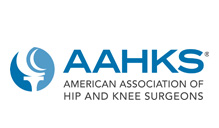What are Groin Injuries in Athletes?
Groin injuries are injuries sustained by athletes during sports activity. Groin injuries comprise about 2 to 5 percent of all sports injuries. The most common kind of groin injury is a groin strain or a pulled groin muscle. Typical groin injuries vary based on athlete’s gender, age, and sports, with most common groin injuries occurring in certain sports such as football with a prevalence rate as high as 12-16%.
Common Causes of Groin Injury
Groin injuries may be caused by:
- Sudden trauma (commonly noted while playing football or rugby)
- Sudden starts and stops of the lower body (common in sports such as soccer, ice hockey, basketball)
- Overuse or repetitive stress (commonly observed in sports such as distance running and triathlon training)
Signs and Symptoms of Groin Injuries in Athletes
Some of the commonly manifested symptoms of groin injuries include:
- Groin pain
- Abdominal pain
- Pain or tenderness at touch or with deep muscle compression
- Pain that reduces with rest
- Disruption of joints (due to severe injury)
- Swelling, stiffness, or discoloration
- Genital pain
- Joint or bone infections
Types of Groin Injuries in Athletes
Common types of groin injuries that athletes are susceptible to include:
- Osteitis Pubis: This is a painful self-limiting condition characterized by inflammation and pain over the symphysis pubis that is exacerbated by activities causing shearing of the pubis like pivoting, cutting, kicking, or rapid accelerations. The onset is normally gradual with athletes complaining of dull aching pain over the symphysis with occasionally radiating to lower abdomen, scrotum, testicles, and perineum.
- Adductor Strains: In athletes, strains of the adductor muscles are the most common cause of acute groin pain. Strains are common with sudden eccentric loading with the adductor longus muscle being the most frequently affected muscle. The significant risk factor for adductor strains is prior injuries with 32% to 44% of injuries being classified as recurrent.
- Sports Hernia: This is a condition caused by weakening of the posterior inguinal wall muscle leading to an occult direct or indirect hernia. Since only the posterior inguinal wall muscle is affected, no clinically detectable inguinal hernia is noted. However, there will be gradually worsening diffuse and deep groin pain.
- Iliopsoas Bursitis/Strains: This condition is characterized by swelling and inflammation of the bursa (fluid-filled sac) present at the front of the hip. It commonly occurs in sports requiring extensive use of hip flexors such as uphill running, soccer, jumping, hurdling, ballet. The condition causes deep groin pain, sometimes radiating to the thigh or anterior hip, often accompanied by a snapping sensation.
- Stress Fractures: Pubic bone fractures and femoral (thighbone) neck stress fractures are the two most commonly noted stress fractures centered around the groin area. This is caused by repetitive overuse and overload as seen in distance runners. Contributing risk factors include muscle fatigue, sudden increase in training regimen, changes in training surface or footgear, or osteoporosis in female athletes with hormonal or nutritional imbalances.
- Avulsion Fractures: These fractures are commonly noted in adolescent athletes involved in sports such as soccer, jumping, sprinting, and hurdling. These fractures occur when the tendons that connect muscles to bone are torn at the connection site resulting in muscle weakness and pain.
- Inguinal Hernia: This type of injury is mostly found in weightlifters. It occurs when the lower abdominal muscles tear or stretch resulting in the formation of a bulge in the groin area as the abdominal organs push through or press against the weakened muscles causing pain, pulling, or dragging sensation in the groin when lifting, stretching, or bending over.
Diagnosis
The diagnosis of groin disorders involves the following steps:
- Subjective examination that includes complete medical history, past treatment, nature of the injury, etc.
- Physical examination
- Observational evaluation of sitting and standing posture, gait patterns, muscle wasting, leg length discrepancy, etc.
- Range of motion tests
- Palpation
- Ligament stress tests
- Muscle testing
- Neural tests
- Imaging
Treatment
Groin injuries are known to respond well to RICE protocol, i.e., Rest, Ice, Compression, and Elevation; hence, providing adequate rest to the affected muscle, application of ice, use of compression bandages, and elevating the affected groin area helps in reducing pain, swelling, and stabilizing the injured area.
The treatment of groin injuries includes various modalities of physical therapy and rehabilitation programs such as strengthening program and sport-specific training. Along with exercises, medications may also be prescribed. Avoiding physical activities that may worsen the pain, stretching the quadriceps and hamstring muscles, and performing warm-up exercises before the actual exercise regimen help to improve the condition.
Surgery is considered when patients fail to respond to conservative line of treatment.






